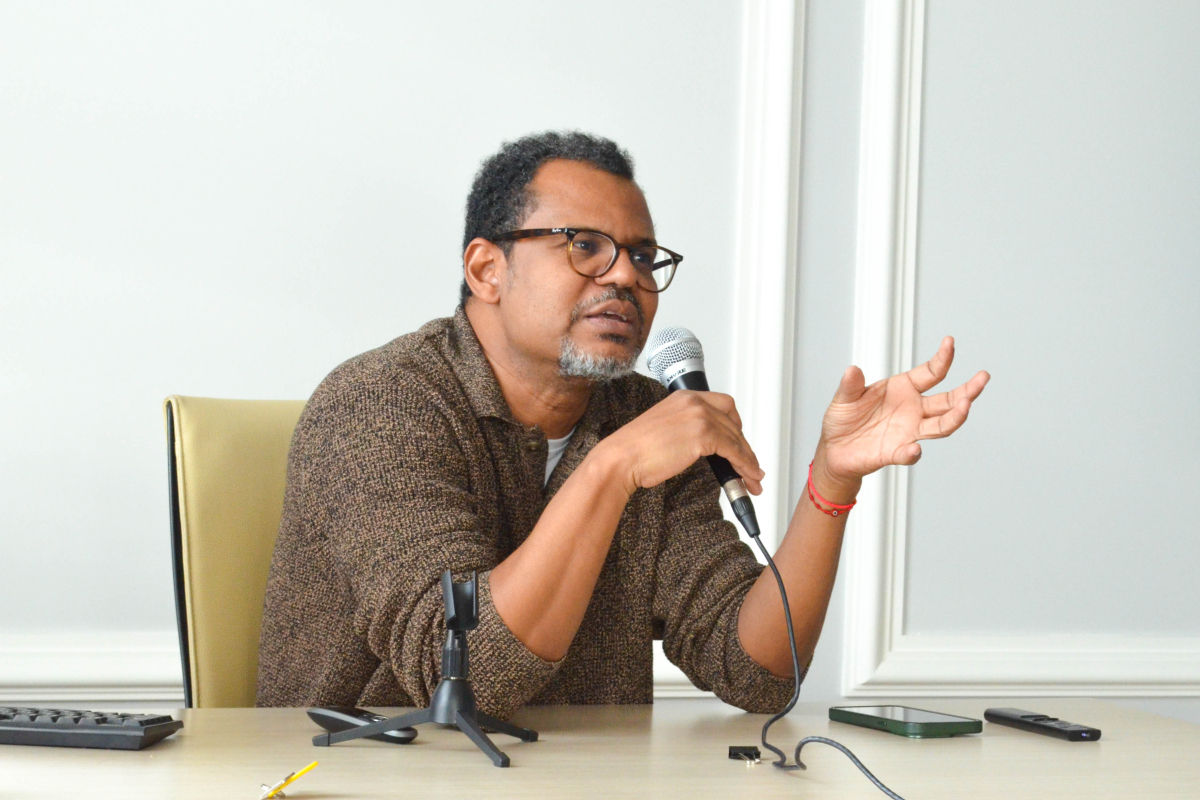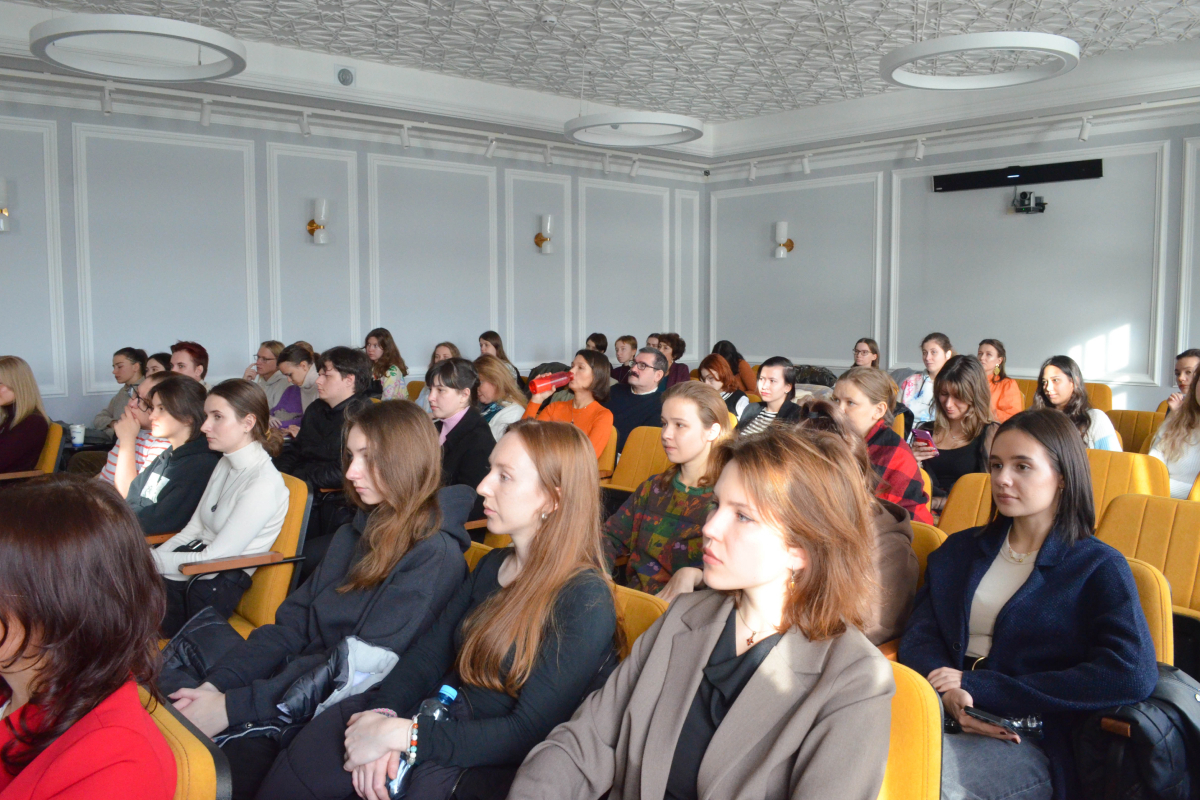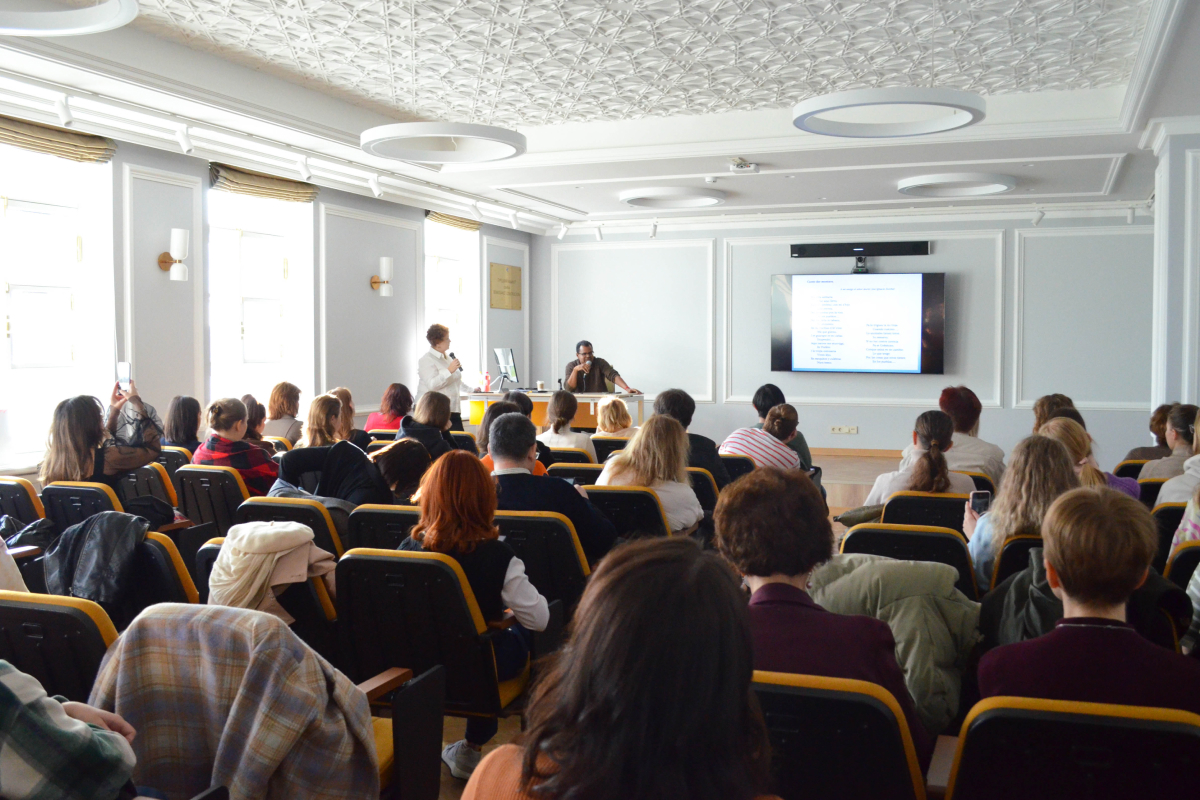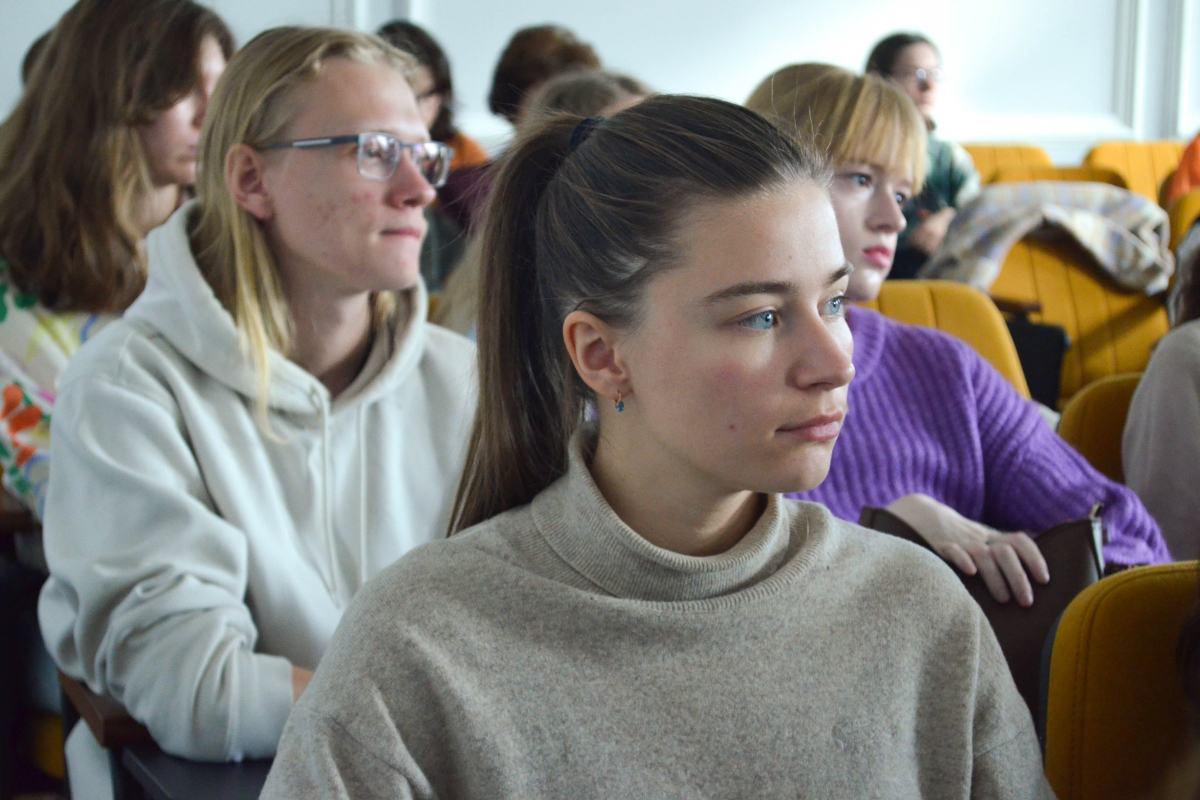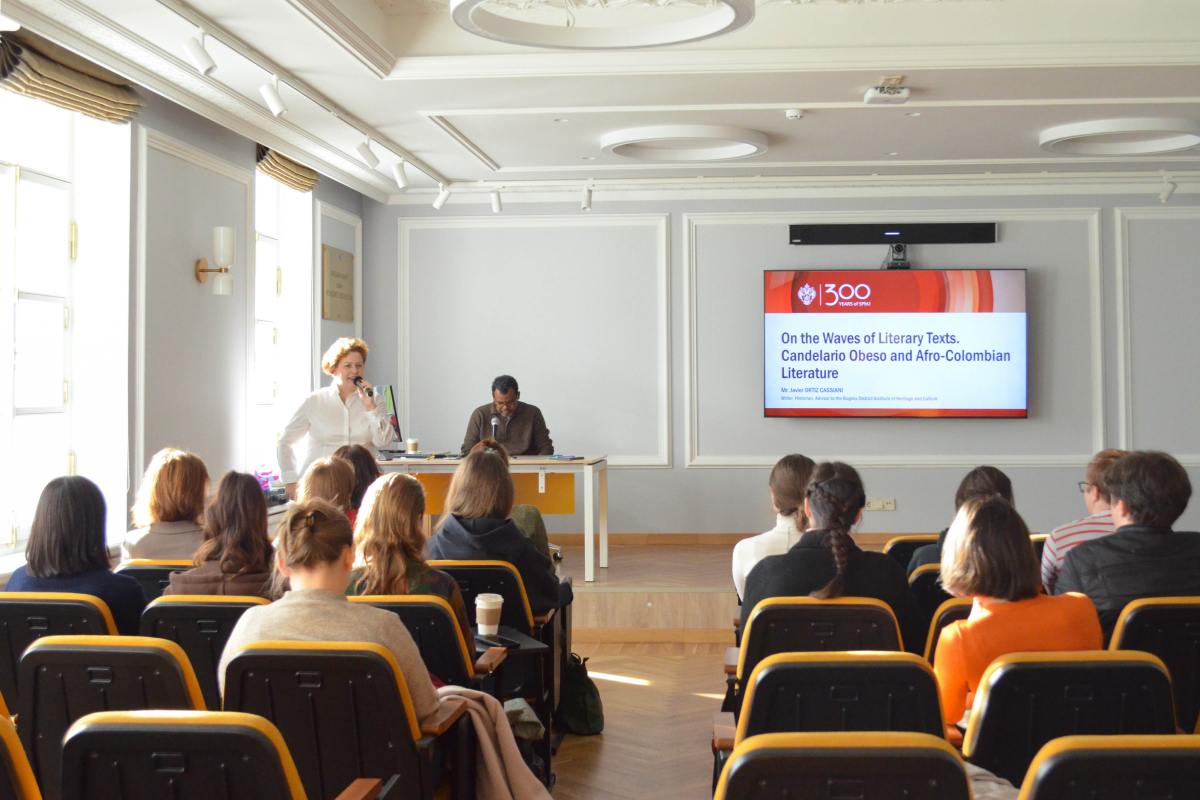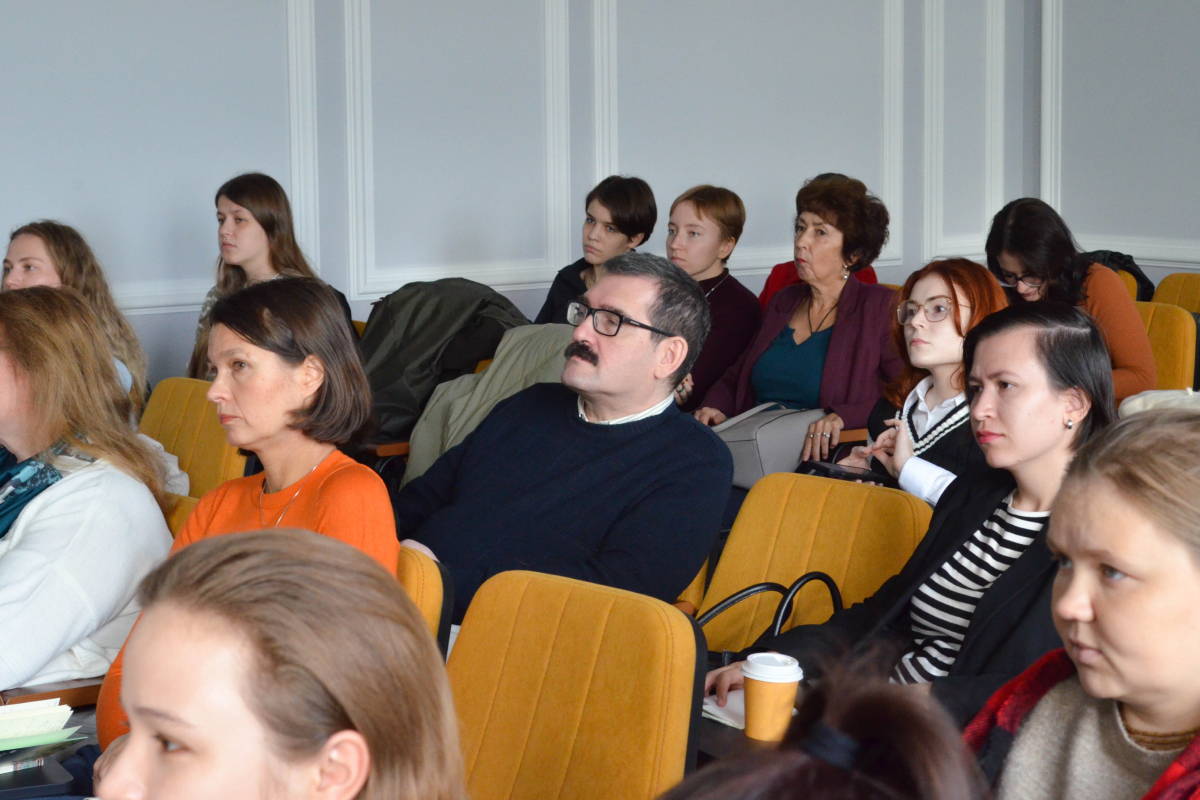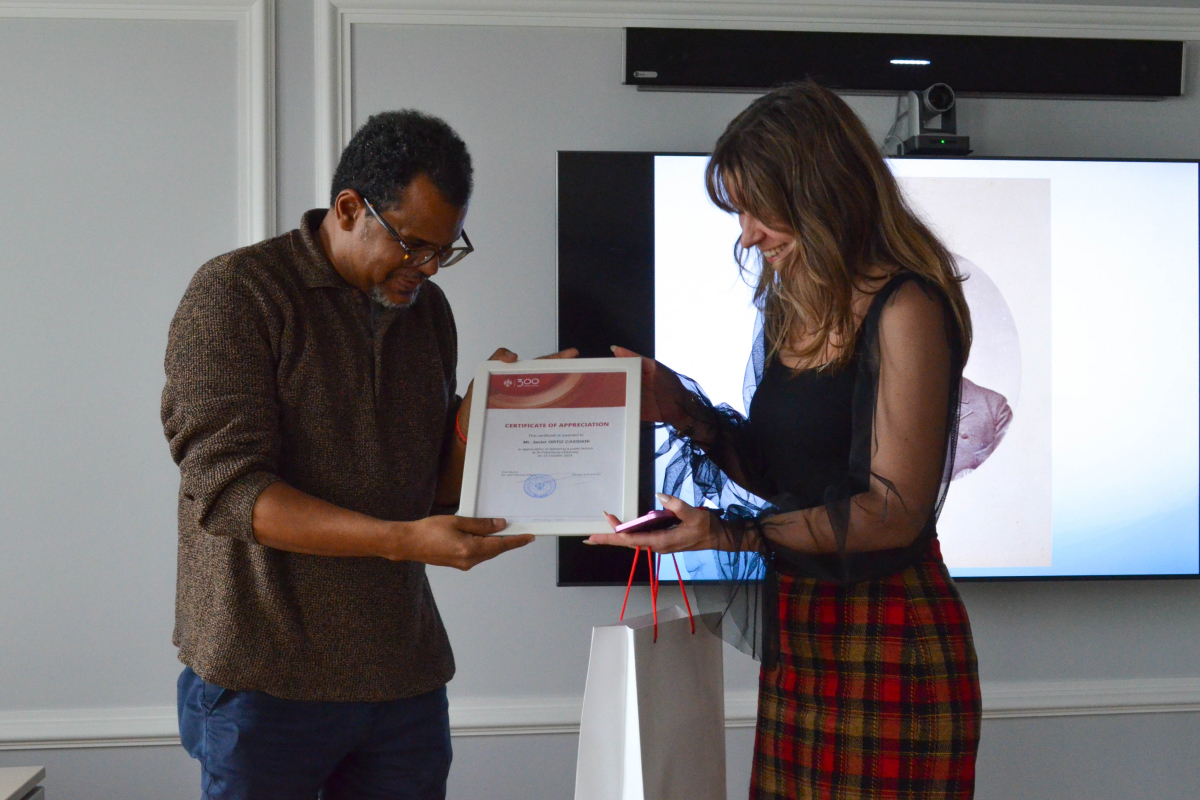St Petersburg University hosts a meeting with Colombian writer Javier Ortiz Cassiani
The event has been organised by the Committee for External Relations of St Petersburg and the Embassy of the Republic of Colombia in the Russian Federation. The discussion between the guest and the University students and staff focused on Afro-Colombian culture.
The meeting was opened by Héctor Isidro Arenas Neira, Ambassador Extraordinary and Plenipotentiary of the Republic of Colombia to the Russian Federation. "I am delighted that Russian students and teachers will have the opportunity to immerse themselves in the history of Colombia’s formation in the 19th century, when it was just beginning to emerge as an independent state. They will also learn about the role played by Afro-Colombian communities, which are an integral part of the national identity of the Colombian people, in the formation of the state," he said.
Mariia Slastunova, Advisor to the Vice-Rector for International Affairs at St Petersburg University, praised the lecturer’s efforts in introducing Russian students to Colombian history and literature."Nowadays, in Russia, there are many false stereotypes about Colombia, its people, and its literature, about which we know very little. Any opportunity to introduce it to Russian readers is therefore extremely valuable for the development of relations between our countries," said Mariia Slastunova.
According to the moderator and interpreter of the meeting, Daria Sinitsyna, Assistant Professor in the Department of Romance Philology at St Petersburg University, the lecture topic was specially chosen for the University’s hispanists. It addressed aspects such as Colombian dialects in Spanish-language literature and the influence of African culture on the translation and creative work of the country’s inhabitants.
Javier Ortiz Cassiani is a writer and historian, specialising in Afro-Colombian art and Afro-Caribbean history. Javier was born in the north of Colombia, in the city of Valledupar. "I talk about where I come from because I think it is important for me to show that I belong to this particular region of Colombia," he explained. "It is important for me to highlight how the African culture that developed in this part of the country has influenced modern Colombian identity."
In his lecture, Mr Cassiani focused on the work of his compatriot, the poet Candelario Obeso (1849–1884), a descendant of bogas, who were the boat rowers of the Magdalena River. Obeso is regarded as one of the literary figures of the 19th century who pioneered Colombia’s national discourse, particularly the recognition of its diverse peoples.
According to Javier Cassiani, the main challenge in redefining the national idea was to include the afrodescendientes — the descendants of slaves who had once replaced the exterminated Indians as the main labour force for the Spanish colonisers.
The bogas were boatmen and pilots who ferried cargo and passenger boats along the Magdalena River, the vast majority of whom were of African descent.
The speaker highlighted that Candelario Obeso served as the voice for people of African descent who could not write but had developed a rich oral tradition. In this context, Obeso’s work Cantos populares de mi tierra, published in 1877, is particularly significant. In this and other songs, Obeso employs the bogas dialect spoken by black Colombians living near the Magdalena River. This dialect is marked by numerous phonetic and lexical features that differ significantly from the Colombian literary norm. A notable aspect of Obeso’s writing style is that the lyrical hero is always a boga.
The term canto, as Javier Ortiz Cassiani explained, is used instead of canción to mean "song", signifying a literary genre. Through this choice, the poet emphasises the origins of his work in the oral tradition of the bogas, who accompanied their labour with rhythmic songs featuring distinctive melodies and guttural sounds.
Candelario Obeso’s songs quickly gained popularity among the Colombian population, sparking a revolution in the national discourse, and black Colombians themselves began "colonising" the consciousness of their fellow citizens.
Javier Ortiz Cassiani
The students also listened to several examples of Obeso’s work, including love and political poetry, and observed how the black poet demonstrates mastery of language and his literary techniques are no less sophisticated than those of white-skinned Latin American authors. The speaker also provided examples of literary analyses of Obeso’s works. "I would like to respond to some critics who tend to conflate an author’s texts with their personal identity. If Candelario Obeso wrote in the language of bogas, it does not mean he was part of that community. It means he had the opportunity to learn their language and pass it on to future generations," Mr Cassiani argued. "It is also important to understand the peculiarities of the hierarchy associated with the bogas. The bogas were an incredibly powerful people, masters of their land, because no one else understood the Magdalena River as they did. Both passenger and freight traffic depended directly on them."
Candelario Obeso was an iconic figure of his time, the lecturer noted. He faced racial discrimination and economic hardship and fell in love with a white high-society woman who rejected his love poems and soon became engaged to a wealthy man. "Obeso wrote: 'The terrible poverty in which I live, my sad homelessness, my skin and my region, rich in great men, have brought me incalculable disappointments. I am poor and I fear nothing.' Candelario Obeso shot himself in the chest and died a few days later in Bogotá, the capital of Colombia, at the age of 35," concluded Mr Cassiani.


